 by our College Data Analytics Team
by our College Data Analytics TeamAntioch University - Los Angeles total enrollment is approximately 924 students. 82 are undergraduates and 619 are graduate students.
Male/Female Breakdown of Undergraduates
The full-time Antioch University - Los Angeles undergraduate population is made up of 66% women, and 34% men.
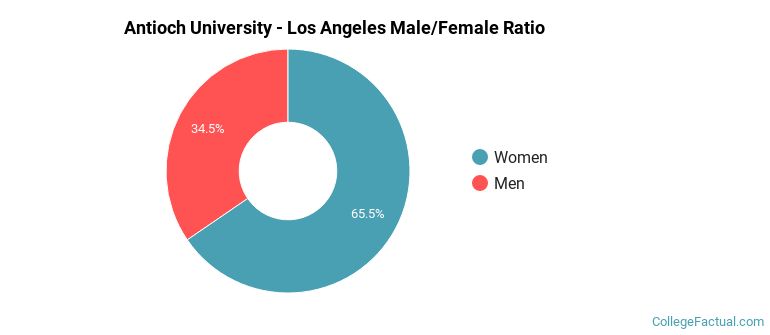
For the gender breakdown for all students, go here.
Antioch University - Los Angeles Racial/Ethnic Breakdown of Undergraduates
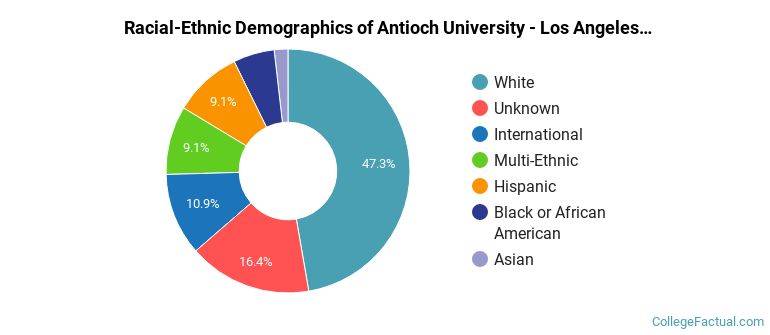
| Race/Ethnicity | Number |
|---|---|
| White | 40 |
| Unknown | 17 |
| Hispanic | 13 |
| Black or African American | 4 |
| Multi-Ethnic | 4 |
| Asian | 2 |
| International | 2 |
| Native Hawaiian or Pacific Islander | 0 |
See racial/ethnic breakdown for all students.
Male/Female Breakdown of Graduate Students
About 71% of full-time grad students are women, and 29% men.
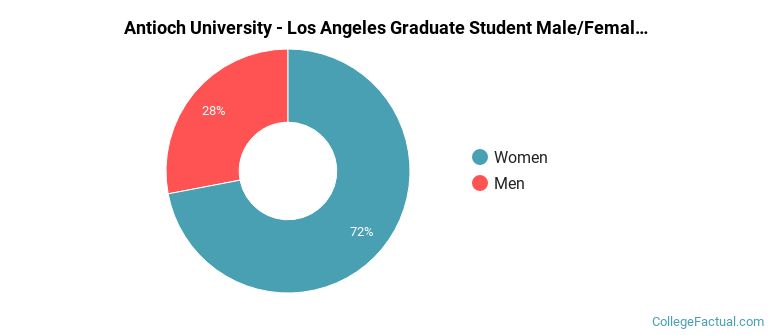
For the gender breakdown for all students, go here.
Antioch University - Los Angeles Racial-Ethnic Breakdown of Graduate Students
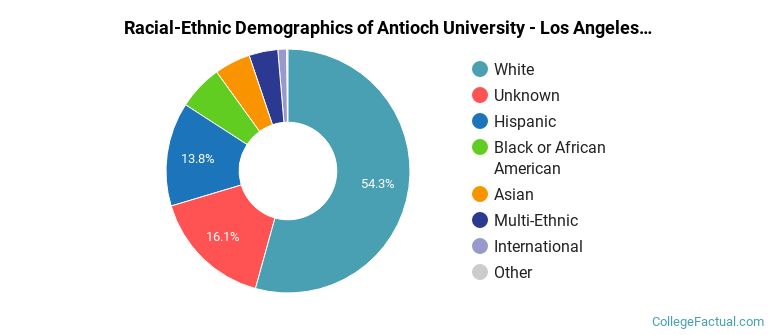
| Race/Ethnicity | Number |
|---|---|
| White | 333 |
| Unknown | 113 |
| Hispanic | 85 |
| Black or African American | 30 |
| Asian | 27 |
| Multi-Ethnic | 25 |
| International | 5 |
| Native Hawaiian or Pacific Islander | 1 |
See racial/ethnic breakdown for all students.

| Race/Ethnicity | Number |
|---|---|
| White | 448 |
| Unknown | 203 |
| Hispanic | 145 |
| Black or African American | 48 |
| Multi-Ethnic | 37 |
| Asian | 34 |
| International | 8 |
| Native Hawaiian or Pacific Islander | 1 |
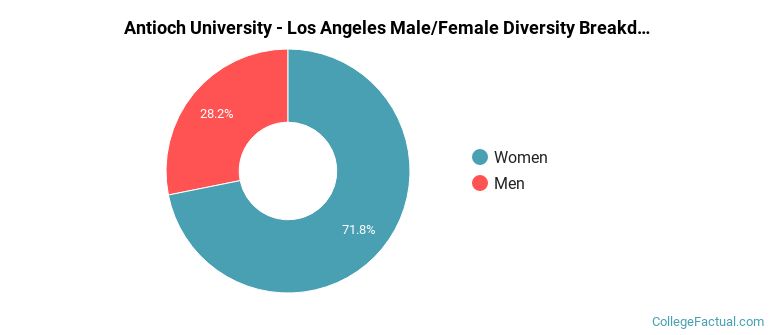
There are approximately 673 female students and 251 male students at Antioch University - Los Angeles.
Learn more about international students at Antioch University - Los Angeles.
A traditional college student is defined as being between the ages of 18-21. At Antioch University - Los Angeles, 2.07% of students fall into that category, compared to the national average of 60%.
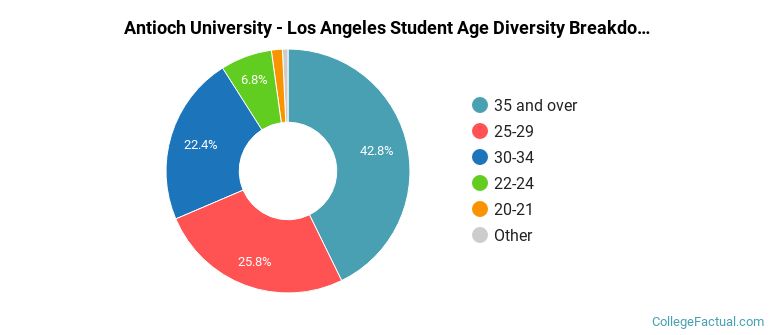
| Student Age Group | Amount |
|---|---|
| 35 and over | 351 |
| 25-29 | 212 |
| 30-34 | 184 |
| 22-24 | 56 |
| 20-21 | 12 |
| 18-19 | 6 |
| Under 18 | 0 |
Footnotes
*The racial-ethnic minorities count is calculated by taking the total number of students and subtracting white students, international students, and students whose race/ethnicity was unknown. This number is then divided by the total number of students at the school to obtain the racial-ethnic minorities percentage.
References
Department of Homeland Security Citizenship and Immigration Services
Read College Factual's Diversity Ranking Methodology.